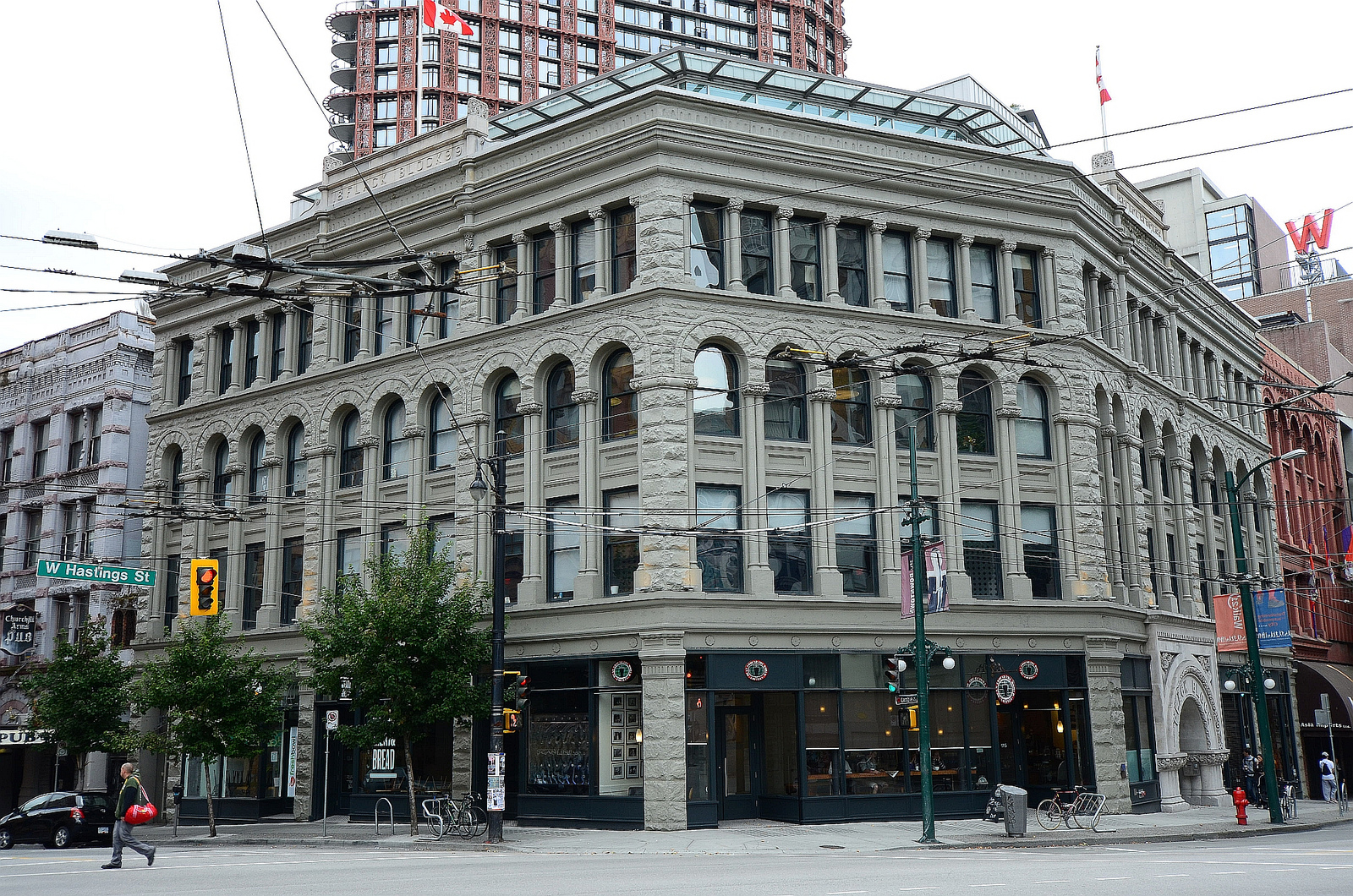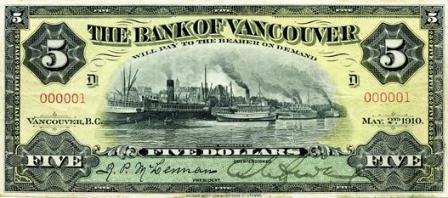Bank Of Vancouver on:
[Wikipedia]
[Google]
[Amazon]
The Bank of Vancouver was a Canadian chartered bank which operated 1910–1914 in


British Columbia
British Columbia (commonly abbreviated as BC) is the westernmost province of Canada, situated between the Pacific Ocean and the Rocky Mountains. It has a diverse geography, with rugged landscapes that include rocky coastlines, sandy beaches, ...
.
Founding
To address a belief that Canada's central banks were not adequately supporting British Columbia's industry and commerce, the Bank of Vancouver was incorporated with $2 million authorized capital in April 1908. The president and driving force wasVancouver
Vancouver ( ) is a major city in western Canada, located in the Lower Mainland region of British Columbia. As the List of cities in British Columbia, most populous city in the province, the 2021 Canadian census recorded 662,248 people in the ...
businessman Robert Purves McLennan. However, the founding directors, which included Lieutenant Governor Thomas Wilson Paterson
Thomas Wilson Paterson (6 December 1850 – 28 August 1921) was a Canadian railway contractor, politician, and the ninth Lieutenant Governor of British Columbia.
Railway career
After moving to British Columbia in 1885, he helped to build ...
and William Harold Malkin
William Harold Malkin (30 July 1868 – 11 October 1959) was the 21st mayor of Vancouver, British Columbia. He was born in Burslem, Staffordshire, England. He served as chairman of the Vancouver Board of Trade in 1902.
Malkin succeeded L. ...
, lacked banking experience.

Expansion
When the bank opened in July 1910, BC was in the midst of an industrial and real estate boom with investment funds readily available from world capital markets. The first branch and headquarters were in the Flack Block on the corner ofHastings
Hastings () is a large seaside town and borough in East Sussex on the south coast of England,
east to the county town of Lewes and south east of London. The town gives its name to the Battle of Hastings, which took place to the north-west ...
and Cambie streets. The issued capital was $1,169,900 and paid-up capital $830,000. By 1913, the bank had four branches in Vancouver, two in Victoria and individual ones in New Westminster, Collingwood, Cedar Cottage, Coquitlam, Hazelton, Fort George, and Fort Fraser. The Chilliwack and Broadway (Cedar Cottage) branches closed in 1912 and 1913 respectively.
Demise
The economic boom ended in 1912, culminating in the North American recession which continued until the onset ofWorld War I
World War I (28 July 1914 11 November 1918), often abbreviated as WWI, was one of the deadliest global conflicts in history. Belligerents included much of Europe, the Russian Empire, the United States, and the Ottoman Empire, with fightin ...
. The Vancouver Island Coal Miners' Strike, which lasted 1912–1914, also impacted the economy. During this period, the bank struggled. By January 1914, the paid-up capital was $873,838, and absorption by another financial institution became critical for survival. At this time, British and German capital began leaving BC because of fears of impending war. The failure of the Dominion Trust Company in October 1914 shook public confidence in financial institutions. A trickle of withdrawals led to a bank run
A bank run or run on the bank occurs when many clients withdraw their money from a bank, because they believe the bank may cease to function in the near future. In other words, it is when, in a fractional-reserve banking system (where banks no ...
, forcing the bank to cease trading in December 1914. The Supreme Court ruled in 1917 that stockholders must settle the $282,295 of unpaid capital. In 1935, the affairs of the bank were finally wound up.

Banknotes
The banknotes issued were in $5, $10, $20, $50 and $100 denominations. Most of the $325,000 of notes in circulation at the time of collapse were probably redeemed by other banks and then cancelled by punching. Only nine uncancelled Bank of Vancouver banknotes are known to exist. Possibly further notes are held in private collections. In July 2008, a $5 banknote sold for $28,750. In June 2010, the first such one issued (serial number 000001) sold at auction for $177,000.References
{{reflist Defunct banks of Canada Economy of British Columbia Banks established in 1910